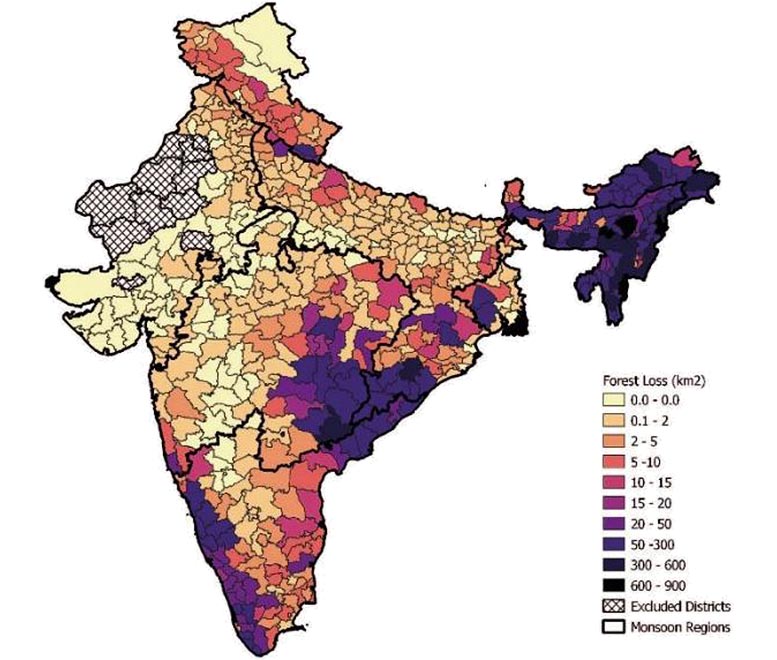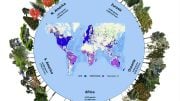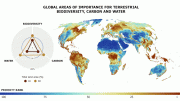
Graphic showing total forest loss in India during the period 2001-2018/ Credit: University of Reading
Forest loss from temperature and rainfall alterations adding to deforestation issue.
Forest loss in India could become an even bigger problem than anticipated in the coming years, with new research revealing climate change has caused significant recent losses.
The first ever national-scale study of the relationship between forest loss and rainfall and temperature trends in India, led by the University of Reading, revealed they may have contributed to large declines since the turn of the century, exacerbating already worrying deforestation largely driven by agricultural expansion in the country.
The new research is in contrast to official reports that show relatively small decreases in forest coverage in recent years. It warns the rapid changes to the climate observed in some regions will necessitate targeted preservation action and funding to reduce the risk to biodiversity in India.
Alice Haughan, a PhD researcher at the University of Reading and lead author of the study, said: “India has seen dramatic forest loss in recent decades, with land-use changes to accommodate crops, livestock and a growing population cited as causes. While the contribution of land-use change to forest loss has been studied extensively, little attention has been given to the role of climate change in recent decreases.
“The rapid changes to the climate we identified suggest India’s forest loss in the coming decades could be far worse than feared, as deforestation is only one part of the problem. The high levels of reduction seen are also concerning for biodiversity, as India relies on connected forests for wildlife preservation.”
The new study, published in Global Change Biology, looked at forest loss between 2001 and 2018 – a period where little data exists.
The authors calculated the velocity of changes to India’s climate for the first time, a relatively new technique used to quantify climate change and reveal the rate at which it is impacting a country.
It also analyzed variability in climate change impacts across different regions and seasons, revealing that the impact of climate change on forest loss varied greatly between different locations and seasons.
Far greater forest losses were seen where and when the climate was changing most rapidly. Decreases in rainfall were seen to have the strongest effect on increasing forest loss, with temperature decreases in some regions also having a negative impact.
Haughan said: “Our study of Indian tropical and subtropical regions shows that rainfall rather than temperature comes into play as the biggest factor in forest loss, in contrast to trends found in many temperate studies.”
The authors argue that, because research has until now largely focused on annual changes to India’s climate, this has masked more dramatic changes to temperature and rainfall within seasons, such as the monsoon seasons.
India is in the top 10 countries in the world for forest coverage, with tropical and subtropical forests covering more than a fifth of the country.
India is also one of the most biodiverse countries, containing 8% of the world’s biodiversity and four recognized biodiversity hotspots. An estimated 47,000 plant species and 89,000 animal species can be found in the country, with more than 10% of each thought to be on the list of threatened species. Around 5,500 plant species are thought to be endemic to India.
Reference: “Determining the role of climate change in India’s past forest loss” by Alice E Haughan, Nathalie Pettorelli, Simon G. Potts and Deepa Senapathi, 11 March 2022, Global Change Biology.
DOI: 10.1111/gcb.16161









ok